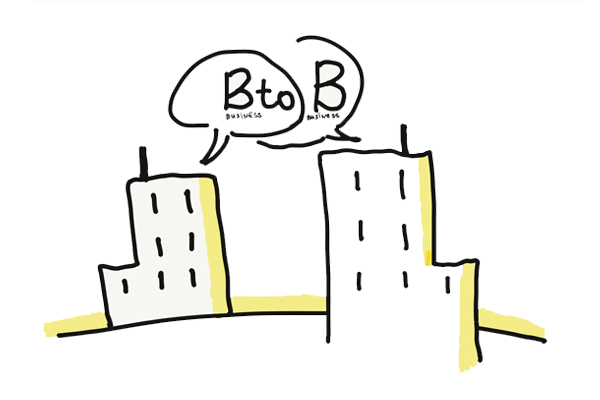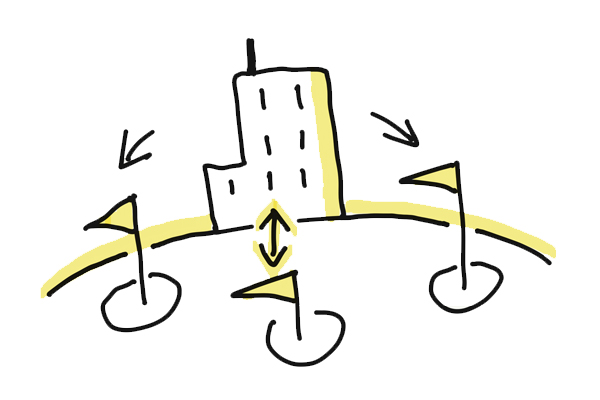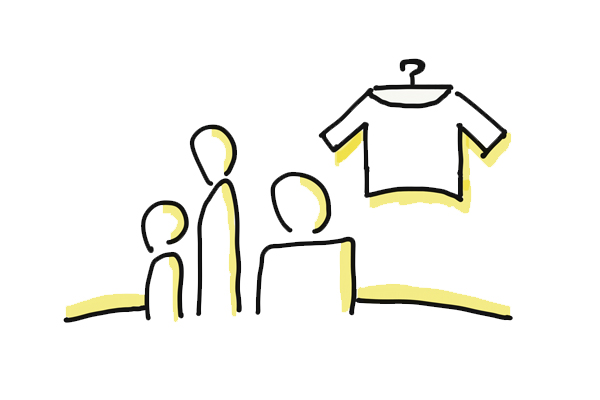Meet Mike. Mike is an insurance agent and has decided to increase his income. He wants to create an insurance comparison website to collect more queries online. Or maybe not; it is too simple.
B2C and little competition in the comparison engine market.
So Mike decides to think bigger, more challenging. Mike also has a law degree. He can even remember the tears of joy on his parents' faces after completing the course, the hard days during his internship in the prosecutor's office, and the expensive cars parked under beautiful tenements.
So he decided to take a more difficult path, opening a law firm. It involves B2B and huge competition in the market, but in return — widespread recognition among peers, parents, and respect of high school friends.
Once work from friends and family has started to dry up, Mike decides to launch a website to generate new B2B inquiries.

The internet was supposed to allow Mike to scale his services, but there are several favorable conditions he'd like to create. Repeatability and standardization of the legal service process and a working sales funnel that collects and converts B2B customer inquiries. This will make up the bulk of Mike's initial marketing strategy.
How can a client's buying persona help Mike collect inquiries (sales leads) and design a sales funnel that will be effective for his target B2B buyer persona?
Persona and sales funnel — definitions
Persona: A comprehensive method of customer segmentation. In addition to demographic and mental similarities, it connects customers in terms of how they see and use a product. In the case of Mike, it's his legal services. The buyer persona can look very different depending on whether you operate in B2C or B2B.
Sales funnel: This is a predefined path that directs the customer from the moment of initial contact to the moment they purchase.
The most wonderful thing about the funnel is that the internet and numerous emerging tools allow you to automate some processes. Particularly during the first two stages — building product awareness and arousing interest. In Mike's case, he'd be targeting B2B buying personas.
Specialization in a service or product
Step 1: If the competition is high, choose a specialization
Mike decided to specialize in the law relating to mergers and acquisitions, i.e., the purchase and sale of companies, shares, and company law.
Market size? Maybe not as big as in the case of divorces, but at least he knows his clients will still have money left to pay for his legal services.

Sales funnel from the customer's point of view
Step 2: Select a specific customer group if you have limited resources
To make a sales funnel, Mike needs to know where to place it so his chosen buyer personas will see it. How to make customers discover him? How to make them interested in his service?
First, however, Mike wants to choose which group of clients he should focus on. This could be individual business owners or decision-makers within a department or team.
Why is this important?
Mike doesn't have the funds to run a big-budget marketing campaign promoting his services. He doesn't have a sales team, the people, or sufficient resources, and he really doesn't like wasting. Mike needs to make sure he maximizes his marketing by targeting the decision-maker.
So he has several options to choose from, but he can't afford to build his reputation and brand among everyone, so it's time to aim at businesses and people that match his selected persona, his ideal customer:
- Starts their adventure with business
- Runs companies and looks for an investor
- Wants to sell their company or shares in it
- Plans to invest: business angels, accelerators, funds
- Wants to buy a company, e.g., from a competition.
Each of these groups is different, different in terms of needs, possibilities, and interests. What's more, each has a different value to Mike, and each one has its own entry threshold and access restrictions.
For example, working with funds can bring greater benefits than with people who are just starting their business. However, the funds have higher expectations and stricter requirements for lawyers who want to work for them. Although, both would require a B2B approach. Mike realizes that creating a sales funnel requires two things.
- A more profound recognition of your clients. Their world, needs, motivations, interests, location, and places where they can be found. The persona can be used for this purpose.
- Choosing one group or buyer persona to focus on. For Mike, getting a more modest lead online to build his reputation is easier than concentrating on a huge market and having smaller results. As the saying goes: "Better a sparrow in your hand than a pigeon on the roof." To achieve this goal, Mike used a tool straight from the strategic analysis.

Personas in legal services
Step 3: Create your clients' personas
Step 4: Choose one or more personas, depending on your capabilities. I purposely specify that it's about legal services
Creating a buyer persona depends on the industry and the product or service that will be bought. The decision-maker is different in each case.
It requires a tailored approach to make sure you create the best buyer personas.
The same person buys a Kinder Bueno and legal services, but the reason for choosing these products is guided by completely different motivations and different selection criteria. The main difference lies in the motivations — while Kinder Bueno is supposed to please, the legal service is bought for fear of something.
Services and products bought for fear of something are a separate topic about which our company, The Story, has been collecting data for two years.
I will not describe in this article how to create a buyer persona, but as promised, I will focus on translating the result of work on a buyer persona into a sales funnel.
The first thing is to get to know the B2B buyer persona that Mike chose to focus on. All the features and information contained in this buyer persona should come from market research and from trusted sources and studies. There are many sources, whether from someone else's research or your own resources (you can take advantage of analytical tools, sales results, and interviews with people who match the B2B buyer's persona).
Sales funnel design
Step 5: Choose elements from the buyer persona that tell you how to reach the persona (touchpoints) and how you can convince them that your product or service is for them (benefits for the buyer persona)
Step 6: Use tools that match touchpoints and design messages to highlight the benefits for the buyer Persona
Mike noticed how much value there was in a potential client actively looking for information on creating company contracts, making them an ideal customer. This differentiates them from investment funds or medium and large companies that have their own legal departments or are supported by a law firm.
Another potential customer can stubble upon information while using Google or spending time on social media, such as Facebook or Instagram.
Mike decides to create a landing page that will collect the information on both types of clients and add it to a list of people potentially interested in his services — sales and marketing leads.
Sales leads are customers aware of the service and ready to buy, who come with a specific inquiry and anticipate a relevant offer.
Marketing leads are customers who are aware of the service but are still considering purchasing and still need to be persuaded to send an inquiry.
Mike addressed professional materials to marketing leads that were written in plain language and were about his specialization — creating company contracts, selling shares, attracting investors, and developing a new company.
During preparation, Mike chose topics and language in a way that addressed the problems and needs of his potential clients. Meanwhile, he addressed a contact form to sales leads.
To make it easier for his clients to reach his website, Mike decided to display ads on Google, Facebook, and Instagram — according to his client's persona profile. When asked what advertising slogans and ad content to use, Mike answered by using data from interviews with his clients. He knew what problems they were facing and what was important to them. Both types of leads are collected by a landing page and go on the list of potential customers.
This all took place under the GDPR. Mike has integrated his website with MailChimp. This tool for managing lists of recipients and sending e-mails allows you to automate the responses to incoming queries and conduct further communication.
In addition, the same queries go to Hubspot. This CRM allows you to conduct ongoing sales of services to customers and analyze the results.
Both tools have free versions and completely meet Mike's expectations.
In this way, he automated a part of his sales activities that take place online. Mike can focus on handling incoming inquiries or acquiring leads offline — visiting the same events that his target persona also attends.

Conclusions: While creating the sales funnel, Mike worked on the persona of his clients
Thanks to this approach, he solved several additional problems:
- Decided which B2B client group is the most attractive to him
- Learned what and through which channels he should communicate with clients
- Prepared the content of advertisements and e-mails appropriate for his persona
- Designed and set up the process of obtaining B2B leads via the Internet.
Summary. How to use a persona while designing the sales funnel?
- If competition is high, choose a specialization.
- If you have limited resources, select a specific customer group.
- Create a buyer persona of your clients.
- Choose one or more buyer personas, depending on your capabilities.
- Choose elements from the buyer persona that will tell you how to reach them (touchpoints) and how you can convince them that the product is right for them (benefits for the buyer persona).
- Take advantage of tools matching touchpoints and design messages.





